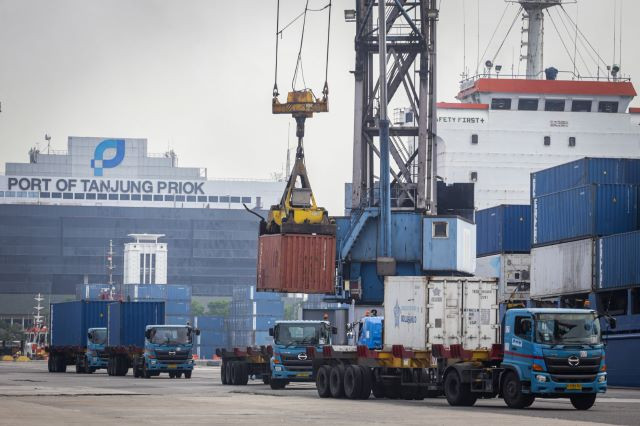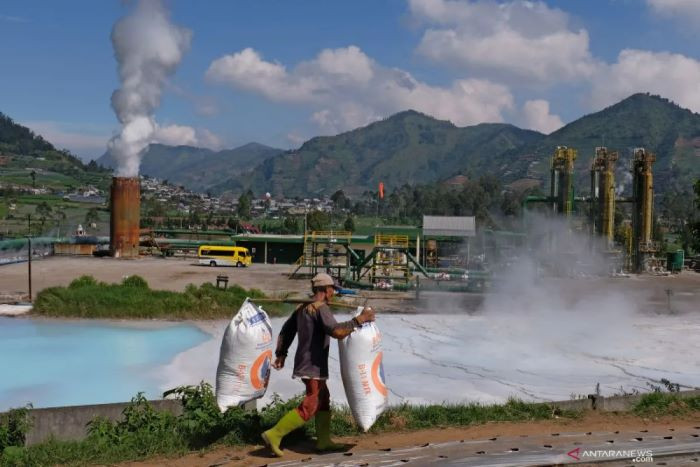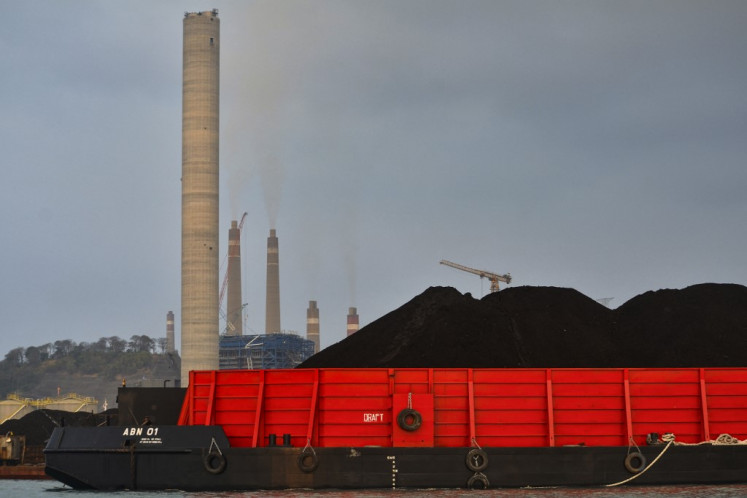Popular Reads
Top Results
Can't find what you're looking for?
View all search resultsPopular Reads
Top Results
Can't find what you're looking for?
View all search resultsUnlocking Indonesia’s supply chain opportunity in energized Southeast Asia
Southeast Asia has emerged as an attractive location in this evolving landscape, as companies look to manage supply costs and mitigate risks.
Change text size
Gift Premium Articles
to Anyone
L
eaders of multinational companies face unprecedented uncertainty in shaping their supply chain strategies and reconfiguring their companies’ network footprints in response to global geopolitical upheaval.
Dynamics between manufacturing powerhouse China and several major trading partners have accelerated pre-existing production shifts. Technology and relative labor costs are changing. COVID-19 demonstrated the need for more resilient supply chains, at a time when geopolitical tensions have created more complex considerations for global trade partners.
In addition, CEOs must assess how to establish an environmental, social, and corporate governance (ESG)-compliant supply base, while identifying which geographical location will be the engine of economic growth in coming years. These complex considerations are why over 90 percent of global manufacturers intend to redesign their supply footprints in the next five years according to a survey by Boston Consulting Group.
Resilient companies are two times as likely to outperform non-resilient peers in long-term total shareholder return (TSR) performance. What is more, a successful footprint transformation can improve companies’ resilience and sustainability and cut their global manufacturing and supply-chain costs by 20 to 50 percent.
Southeast Asia has emerged as an attractive location in this evolving landscape, as companies look to manage supply costs and mitigate risks. This provides a lucrative opportunity to explore manufacturing opportunities in markets such as Indonesia.
Southeast Asia: New manufacturing epicenter
Adding to this attractive proposition is the compelling cost-competitiveness of Southeast Asia’s manufacturing landscape. BCG’s proprietary Global Manufacturing Cost Comparison Model assesses that baseline manufacturing costs in Southeast Asia are now up to 15 percent lower than China, even before applying potential logistics and tariff costs, in a region boasting large volumes of skilled, low-cost labor.
Southeast Asia has already benefited from significant shifts away from China, with exports to the United States soaring by 65 percent from 2018 through 2022, while US goods imports from China declined by 10 percent.
Domestic consumption in Southeast Asia is projected to reach US$4 trillion by 2031. Rapid regional growth has also fashioned a large domestic market, with a GDP of $3.6 trillion in 2022, with the share of middle- and high-income households on track to reach 84 percent of households by 2031.
Regionally, ASEAN has implemented a range of supportive policies in recent years, with measures to enhance free flow of goods and services among member states. Expansion and modernization of ports has been complemented by investment in energy, transportation and digital infrastructure. The ASEAN highway network, Singapore-Kunming rail project and Indonesia-Malaysia-Thailand Growth Triangle are all examples of this evolving ecosystem. These initiatives align with the wider ASEAN Economic Community blueprint, which looks to embed a deeply integrated and mutually beneficial regional economy, with seamless movement of goods and people.
Major trade agreements such as the Regional Comprehensive Economic Partnership (RCEP) and Comprehensive and Progressive Agreement for Trans-Pacific Partnership (CP-TPP) mean the region has competitive trade access with countries that together account for 40 percent or more of global GDP.
Globally, the value-add of Southeast Asia’s manufacturing industry will double from $748 billion in 2022 to $1.4 trillion by 2028. The projected compound annual growth rate (CAGR) of 11 percent puts Southeast Asia at the forefront of global manufacturing growth, outpacing competitors India (8.4 percent), China (3.6 percent), and Mexico (3.3 percent). According to BCG’s proprietary Global Trade Model, Southeast Asia’s exports will grow by nearly 90 percent, reaching $3.2 trillion by 2031.
The region is poised to capture value from increasingly dynamic global manufacturing shifts, a landscape explored in detail in BCG’s recent report “Harnessing the Tectonic Shifts in Global Manufacturing”.
Indonesia offers fresh manufacturing opportunities
Southeast Asia’s manufacturing market is currently dominated by six key countries, with unique considerations as to the opportunities they present. Indonesia, Malaysia, Philippines, Singapore, Thailand and Vietnam boast diverse manufacturing opportunities across a broad range of industries.
Indonesia and Southeast Asia’s manufacturing opportunity is on the rise, but companies must make careful strategic choices to unlock the greatest share of this value, assessing local benefits and challenges.
As Southeast Asia’s largest economy, with high-growth fundamentals and an appealing demographic advantage, Indonesia is well poised to position itself as an attractive regional location. Indonesia’s manufacturing PMI index is the highest among ASEAN peers according to analysis from August 2023, and only slightly below that of Asian leader India.
Indonesia boasts low productivity-adjusted manufacturing costs, ~15 percent lower than China. It has an attractive domestic market with a population of approximately 275 million people, a workforce of 145 million, and a consumer class demographic expected to increase by 75 million 2020-2030.
While boasting encouraging fundamentals, Indonesia is home to some unique challenges. These include developing infrastructure that limits inter- and intra-island trading networks, creating inflationary pressures on domestically produced goods. Lagging sustainability credentials also create issues in a global marketplace increasingly worried about ESG concerns.
Companies need to reflect on the complexities of entering and operating to ensure a successful supply chain transition. They need to understand how global trade flows will evolve, and how this may shift competitive advantages over rivals.
Benchmarking costs across different countries and regions is also essential. This includes understanding the impact of key components such as regional differences in wage rates, labor productivity, operating overheads, tariffs, taxes etc. Even within individual countries, companies need to analyze the most attractive region or location based on availability of local talent, supply base, government incentives, infrastructure and more.
This is a vibrant, high growth but diverse region, creating complex competitive considerations. Companies must also prepare to navigate a fragmented business ecosystem heavily reliant on the power of relationships.
Southeast Asia and Indonesia remain compelling and attractive destinations for supply chain relocation thanks to persistent geopolitical trends, regional policy measures and a growing domestic market. While the regional opportunity is ripe, understanding the local context is vital to realizing this opportunity. Those who tread this path successfully are poised to position themselves at an exciting new heart of global manufacturing potential.
Special thanks: The authors would like to thank Michael McAdoo (partner and director, Global Trade & Investment, Boston Consulting Group) for contributing his insights to this article.
***
Kazutoshi Tominaga is a managing director and senior partner at Boston Consulting Group. Hitesh Tak is a managing director and partner at Boston Consulting Group.











